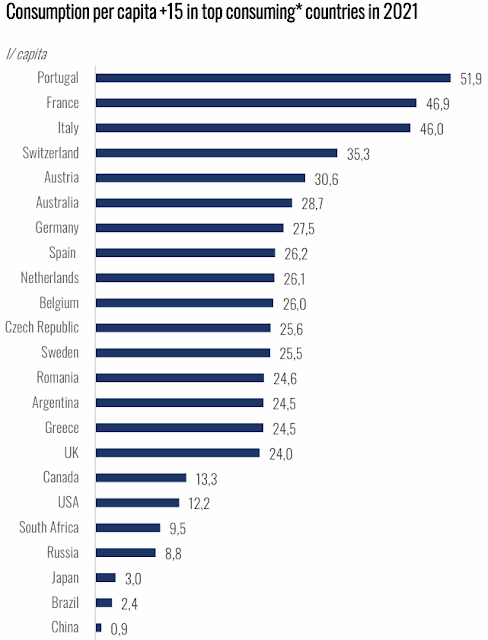A couple of weeks ago, the AAWE (American Association of Wine Economists) Facebook page revealed that There are a few large offenders in the U.S. wine industry that have been fined millions of dollars for various violations (including kickbacks and bribery). This is definitely worth looking at in more detail. Indeed, last week I looked at accusations of Pay-for-Play in the wine industry (We all know that there is Pay-for-Play in wine reviews), which comes pretty close to the concept of kickbacks / bribery (although some parts of the wine industry see it as simply a cheap form of advertizing).
The database containing the violation data is from Good Jobs First. To get the list as related to wine, simply enter wine in their search field.
The current list has 157 violations, involving 112 different companies, and totaling more than US$24 million in fines, between the years 2000 and 2021. These fines relate to 15 types of violation, as listed in the first table below. Note that two-fifths of these fines relate to workplace or health violations, with another one-quarter involving wage violations. The latter are clearly seen as pretty serious, since they have the greatest average fine per violation (twice that of any other violation type).
For some reason, the violations were particularly common during 2016–2018, with nearly one-third of the incidents. The years 2008 and 2012 also had bursts of illegality.
The top five individual violations do stand out from the others, each involving a fine of US$1 million or more, as listed at the top of the next table. So, number 1 is a wage violation case, as, indeed, are four of the five largest — this is the sort of incident that does not attract much media attention, but which the legal system obviously sees very differently. The number two violation involved kickbacks / bribery, which is the sort of thing that always gets much more media attention.
It is always worth noting which companies are involved in the violations, as this reveals a particular management style or strategy. The bottom of the above table shows that various components of Southern Glazer's are repeated culprits, with 19 of the violations, for a total of more than US$12 million in fines (ie. 50% of the total fines). Well done!
Southern Glazer’s Wine & Spirits is the largest wine and spirits distributor in the United States; and it was the 11th largest private company in the United States in 2021. So, its presence on the violations list is not necessarily surprising, although it is disappointing. Clearly, there is a management issue here. Colony Liquor & Wine Distributors, on the other hand, was dissolved in September 2007, having been founded in July 1996. So, its four violations in nine years of operation, two of them very serious, is quite extraordinary.
The Wine Group and Bronco Wine Co. are among the biggest US wine companies, and so, once again, their presence in the violations list may not be all that surprising. However, if we look at the biggest wine companies in the USA, by the number of cases produced (as listed by Wine Business Monthly), then E&J Gallo Winery, Trinchero Family Estates, Delicato Family Vineyards, and Jackson Family Wines do not appear in the violations list at all — so, bigger size creates more opportunities, but those opportunities do not need to be taken. Treasury Wine Estates appears once ($12 600), while both Constellation Brands ($69 770) and Ste. Michelle Wine Estates ($20 600) appear three times each. Clearly, the management style in these companies is quite different from those listed above.
We would have more violations to view, and not cheap ones, if we went back further than 2000. For example, the recently deceased Fred Franzia specialized in legal cases in the 1990s, usually involving label violations (ie. mis-representing grape sources). His Bronco Wine Co. (also highlighted above) paid millions more in federal fines for conspiracy to defraud, in that decade. Hopefully, the new president can keep things on a better track (Bronco Wine Company’s board of directors selects a new president/CEO).
As for the future, there are always potential rocky shoals. For example, it has been pointed out (Top things to know about alcohol advertising rules and the internet) that there are ongoing legal issues in the USA that need to be addressed:
Both federal and various state regulators have signaled their intent to ramp up policing of rules and regulations governing the advertising and marketing of alcohol, particularly when it comes to advertising on the internet. As suppliers increasingly move online, both in terms of direct-to-consumer (DtC) shipping and using social media to get their message out, it is critical for them to remember that these rules do matter and need to be followed.You have been warned — the list of violations can only get longer!















